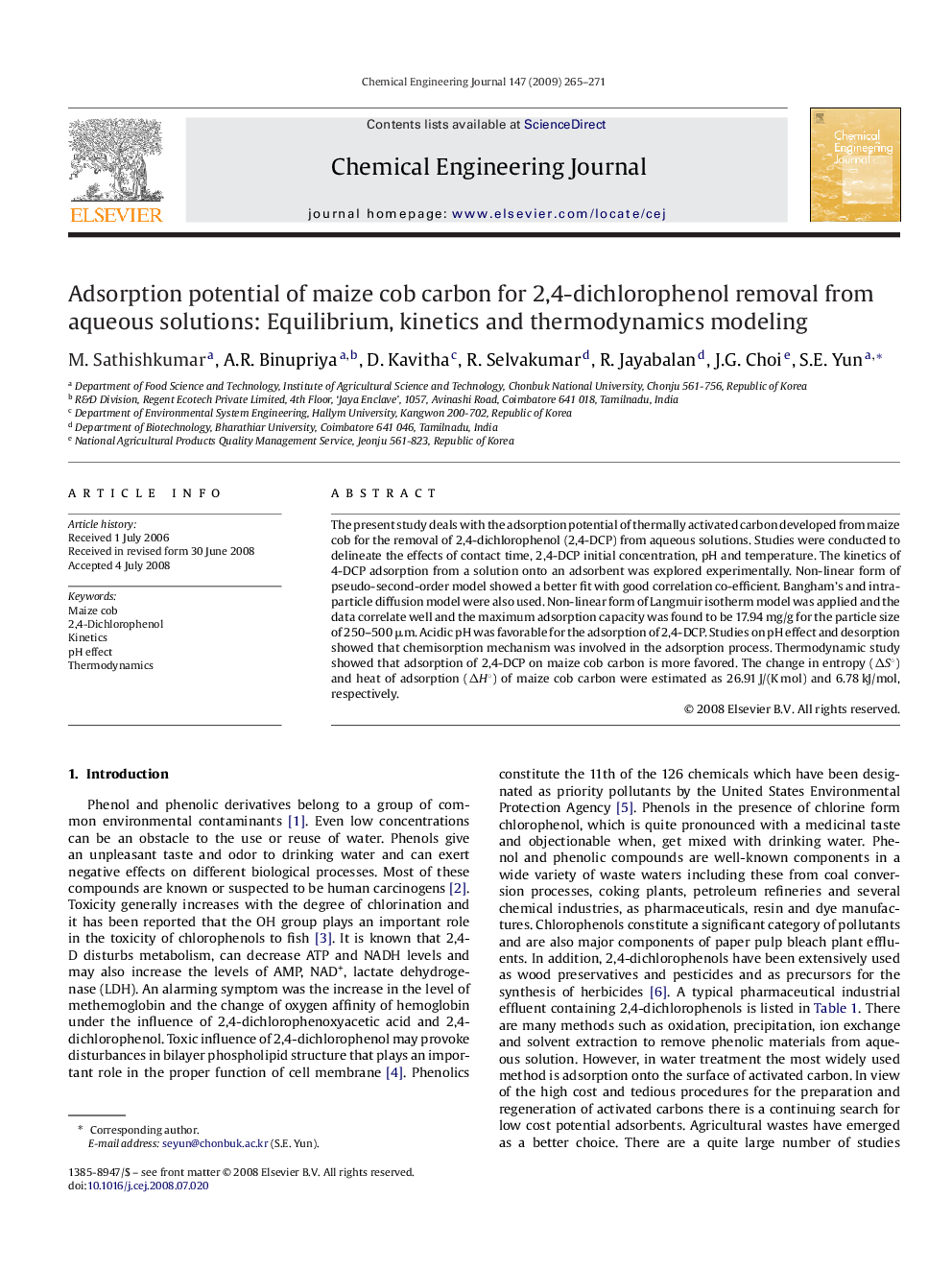| Article ID | Journal | Published Year | Pages | File Type |
|---|---|---|---|---|
| 152554 | Chemical Engineering Journal | 2009 | 7 Pages |
The present study deals with the adsorption potential of thermally activated carbon developed from maize cob for the removal of 2,4-dichlorophenol (2,4-DCP) from aqueous solutions. Studies were conducted to delineate the effects of contact time, 2,4-DCP initial concentration, pH and temperature. The kinetics of 4-DCP adsorption from a solution onto an adsorbent was explored experimentally. Non-linear form of pseudo-second-order model showed a better fit with good correlation co-efficient. Bangham's and intra-particle diffusion model were also used. Non-linear form of Langmuir isotherm model was applied and the data correlate well and the maximum adsorption capacity was found to be 17.94 mg/g for the particle size of 250–500 μm. Acidic pH was favorable for the adsorption of 2,4-DCP. Studies on pH effect and desorption showed that chemisorption mechanism was involved in the adsorption process. Thermodynamic study showed that adsorption of 2,4-DCP on maize cob carbon is more favored. The change in entropy (ΔS°) and heat of adsorption (ΔH°) of maize cob carbon were estimated as 26.91 J/(K mol) and 6.78 kJ/mol, respectively.
